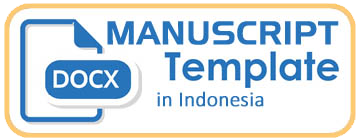PENGGUNAAN MEDIA GAMIFIKASI UNTUK MENINGKATKAN MOTIVASI BELAJAR SISWA SEKOLAH DASAR
Keywords:
gamification, motivation, learning, elementary students, innovationAbstract
The decline in learning motivation among elementary school students is a significant concern in education. Many students feel bored and disengaged with conventional teaching methods. This study aims to examine the effect of gamification media on students' learning motivation. The research used a classroom action research method with two cycles, involving observation and motivation questionnaires. The results showed a significant increase in learning motivation scores after the application of gamification-based media such as interactive quizzes and point systems. The use of gamification effectively increased students' active participation, enthusiasm, and focus during learning activities. Gamified learning environments also promote a more dynamic and interactive atmosphere, encouraging curiosity and sustained attention, wcich are crucial in early education. These findings indicate that gamification media can serve as an effective learning strategy to enhance student motivation. Moreover, gamification tools are capable of accommodating various learning styles-visual, auditory, and kinesthetic-making the classroom experience more inclusive. The results are expected to be a reference for teachers in developing more engaging and enjoyable learning experiences in elementary classrooms. In this way, the integration of game-based elements has the potential to transform traditional instruction into a more student-centered and motivating process.
Downloads
References
Acuña, M. H., Ogilvie, K. W., Baker, D. N., Curtis, S. A., Fairfield, D. H., & Mish, W. H. (1995). The Global Geospace Science Program and its investigations. In Space Science Reviews (Vol. 71, Issues 1–4). https://doi.org/10.1007/BF00751323
Borgelt, C., & Kruse, R. (2002). Compstat. Compstat, April. https://doi.org/10.1007/978-3-642-57489-4
Ernanto, H., & Hermawan, S. (2022). Table Of Content Article information ............................................ Rechtsidee. Indonesian Journal of Law and Economics Review, 14(2), 6–14.
Ganesha, U. P. (2022). International Education of Elementary. In International Journal of Elementary Education: Vol. 6 (2).
Hamari, J., Koivisto, J., & Sarsa, H. (2019). Does Gamification Work? Proceedings of the Annual Hawaii International Conference on System Sciences, January(6–9), 3025–3034.
Hasan, M., Milawati, Darodjat, Khairani, H., & Tahrim, T. (2021). Media Pembelajaran. In Tahta Media Group.
Irnawati, D. R., Makmur, A., & Istiyowati, L. S. (2024). Pengaruh Pembelajaran Berbasis Gamifikasi terhadap Motivasi Belajar Matematika Pasca Pandemi Covid-19. Cetta: Jurnal Ilmu Pendidikan, 7(1), 82–88. https://doi.org/10.37329/cetta.v7i1.2997
Keller, J. M. (2010). Motivational Design for Learning and Performance. Motivational Design for Learning and Performance. https://doi.org/10.1007/978-1-4419-1250-3
Philosophy, E., Putra, L. D., Hidayat, F. N., Izzati, I. N., Ramadhan, M. A., & Dahlan, U. A. (2024). Alacrity : Journal Of Education. 4(3), 131–139.
Prasetya, M. D. (2024). Penerapan Media Pembelajaran Interaktif Untuk Meningkatkan Hasil Belajar Ppkn Kelas. 3, 311–328.
Rafi, I., Nurjannah, F. F., Fabella, I. R., & Andayani, S. (2020). Peluang dan Tantangan Pengintegrasian Learning Management System (LMS) dalam Pembelajaran Matematika di Indonesia. Jurnal Tadris Matematika, 3(2), 229–248. https://doi.org/10.21274/jtm.2020.3.2.229-248
Reigeluth, C. M. (2018). Understanding Instruction ( 141 ). December. https://doi.org/10.1111/j.1467-8535.2009.01051
Suparmini, K., Suwindia, I. G., & Winangun, I. M. A. (2024). Gamifikasi untuk meningkatkan motivasi belajar siswa di era digital. 5(2), 145–148.









